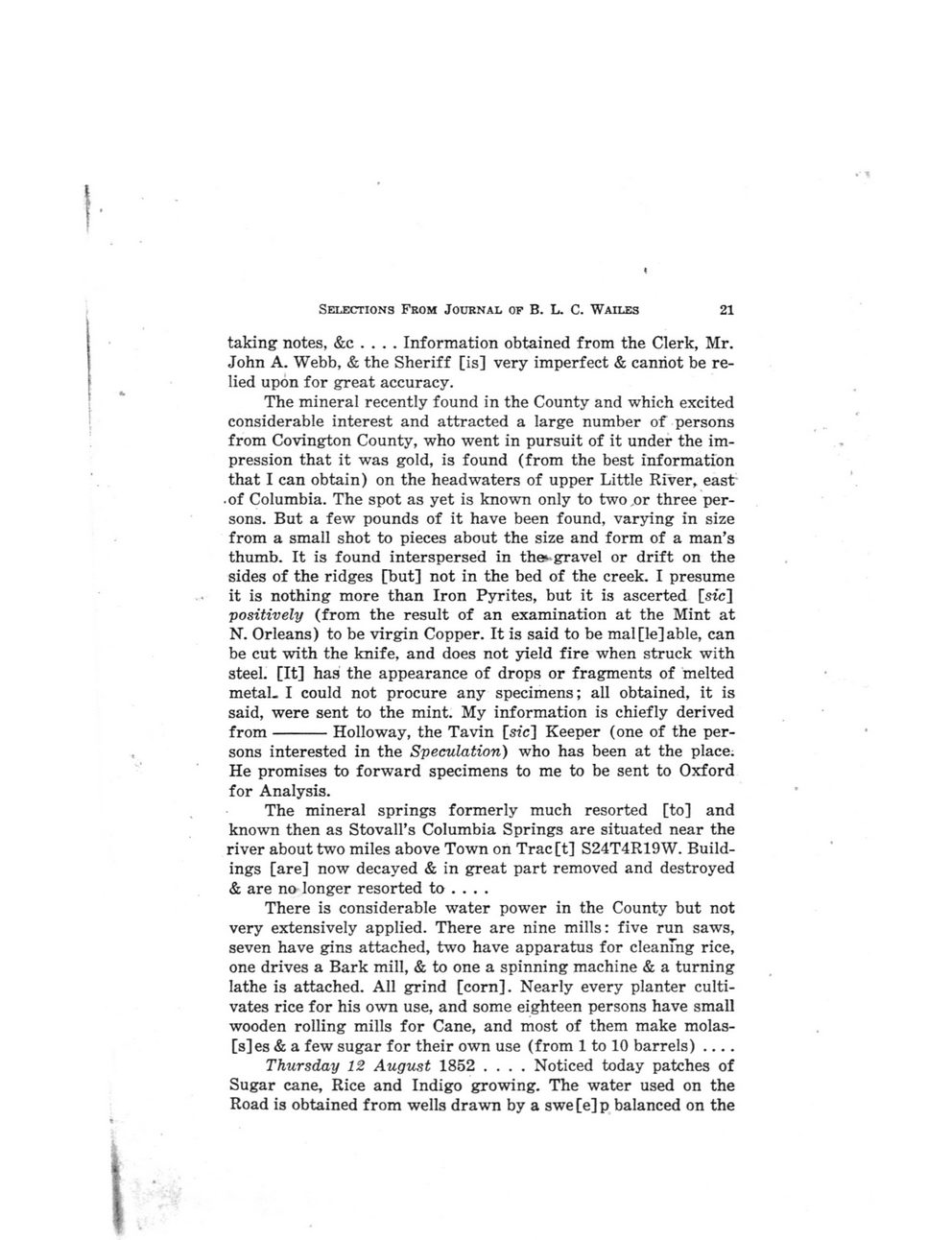This text was obtained via automated optical character recognition.
It has not been edited and may therefore contain several errors.
Selections From Journal op B. L. C. Wailes 21 taking notes, &c . . . . Information obtained from the Clerk, Mr. John A. Webb, & the Sheriff [is] very imperfect & cannot be relied upon for great accuracy. The mineral recently found in the County and which excited considerable interest and attracted a large number of persons from Covington County, who went in pursuit of it under the impression that it was gold, is found (from the best information that I can obtain) on the headwaters of upper Little River, east ? of Columbia. The spot as yet is known only to two .or three persons. But a few pounds of it have been found, varying in size from a small shot to pieces about the size and form of a man?s thumb. It is found interspersed in the*- gravel or drift on the sides of the ridges [but] not in the bed of the creek. I presume it is nothing more than Iron Pyrites, but it is ascerted [sic] positively (from the result of an examination at the Mint at N. Orleans) to be virgin Copper. It is said to be mal[le]able, can be cut with the knife, and does not yield fire when struck with steel. [It] has the appearance of drops or fragments of melted metal. I could not procure any specimens; all obtained, it is said, were sent to the mint. My information is chiefly derived from---------Holloway, the Tavin [sic] Keeper (one of the per- sons interested in the Speculation) who has been at the place. He promises to forward specimens to me to be sent to Oxford for Analysis. The mineral springs formerly much resorted [to] and known then as Stovall?s Columbia Springs are situated near the river about two miles above Town on Trac[t] S24T4R19W. Buildings [are] now decayed & in great part removed and destroyed & are no longer resorted to ... . There is considerable water power in the County but not very extensively applied. There are nine mills: five run saws, seven have gins attached, two have apparatus for cleaning rice, one drives a Bark mill, & to one a spinning machine & a turning lathe is attached. All grind [corn]. Nearly every planter cultivates rice for his own use, and some eighteen persons have small wooden rolling mills for Cane, and most of them make molas-[s]es & a few sugar for their own use (from 1 to 10 barrels) Thursday 12 August 1852 .... Noticed today patches of Sugar cane, Rice and Indigo growing. The water used on the Road is obtained from wells drawn by a swe[e]p balanced on the

Claiborne, J.F.H Claiborne-J.F.H-061